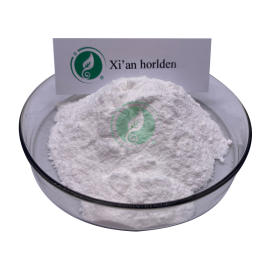-
Categories
-
Pharmaceutical Intermediates
-
Active Pharmaceutical Ingredients
-
Food Additives
- Industrial Coatings
- Agrochemicals
- Dyes and Pigments
- Surfactant
- Flavors and Fragrances
- Chemical Reagents
- Catalyst and Auxiliary
- Natural Products
- Inorganic Chemistry
-
Organic Chemistry
-
Biochemical Engineering
- Analytical Chemistry
- Cosmetic Ingredient
-
Pharmaceutical Intermediates
Promotion
ECHEMI Mall
Wholesale
Weekly Price
Exhibition
News
-
Trade Service
| Genetic variation and gene infiltration between cultivated, wild and weed radishes |
Recently, the germplasm resources innovation team of the Institute of Vegetables and Flowers of the Chinese Academy of Agricultural Sciences (hereinafter referred to as the Institute of Vegetables and Flowers) led the decoding of 11 representative genomes of the genus Radish with a wide range of species, subspecies and variants, and constructed a multi-level pan-genome at the genus level.
, The study revealed the genome-wide genetic variation and gene exchanges, as well as the characteristics and mechanisms of genome evolution among cultivated radishes, wild radishes and weed radishes
.
This research is of great significance to the origin and evolution research of the radish genus and even the entire cruciferous plants, the mining of genetic resources, the breeding of modern organisms, the protection of germplasm resources, and the prevention and control of weeds
Although there have been reports of constructing a radish genome map using second- and third-generation sequencing technologies, a single genome cannot represent all the genetic information of different species, subspecies and variants of the genus Radish
.
Both Radish and Brassica of the same family have undergone multi-ancestral genome polyploidization.
In view of this, the researchers used PacBio, Illumina, Bionano and Hi-C technologies to assemble high-quality genomes of 11 typical germplasm materials covering Radish
.
Phylogenetic analysis shows that wild and cultivated radishes of the genus Radish differentiated 1.
Gene penetration analysis showed that the degree of participation of different subspecies variants in gene exchange may be the reason for the differentiation of European and East Asian radish varieties
.
Wild radish only has obvious gene introgression with European cultivated radish, Indian radish and European radish have obvious gene introgression, and there is gene exchange between Japanese and Chinese local varieties
The team further constructed a pan-genome of Radish based on 11 genome loci, gene families, and graphical methods
.
The analysis found that after the differentiation of cultivated radish and wild radish, the acquisition and loss of non-core genes and unique genes were faster than core genes
In short, this research not only provides new genetic resources and new insights for the mining and genetic improvement of the whole genome of Radish, but also puts forward that in the increasingly extensive exchanges around the world, it is necessary to have a deep understanding of the evolutionary mechanism of plant genomes and coordinate crops from an evolutionary perspective.
New viewpoints on breeding, protection of germplasm resources and green prevention and control of weeds
.
Researcher Li Xixiang of the Institute of Vegetables and Flowers is the corresponding author of the paper, and associate researcher Zhang Xiaohui is the first author
.
The research was funded by the National Key Research and Development Program, the National Natural Science Foundation of China, and the innovative engineering project of the Chinese Academy of Agricultural Sciences
.
(Source: China Science News Zhang Qingdan)
Related paper information: https://doi.
https://doi.
org/10.
1016/j.
molp.
2021.
08.
005







